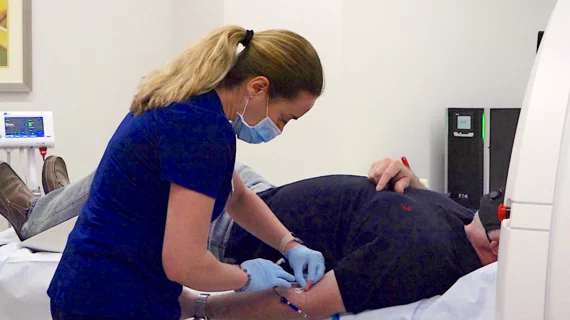Frontline perspectives on the CT contrast shortage: 5 notable quotes
U.S. healthcare is now a solid week into the CT contrast shortage of ’22, and common themes are emerging in adaptations at local hospitals and imaging centers.
One is the wisdom of making up-or-down contrast and scanning decisions one patient at a time rather than as a blanket short-term policy.
Another is the commonsense call to reserve inventory for patients most in need while avoiding use of the term rationing.
A third might be the fingers-crossed expectation that the shortage will not drag on to where it becomes a crisis.
Consider:
If you come to the emergency room and have appendicitis or signs and symptoms for an infected appendix, there’s good literature that a CT scan can be done without contrast. The difficult part of the situation is there’s not a lot of data on this. These are things we’re taking on a case-by-case basis, reviewing each case, looking at the risk and determining the best imaging modality.”—Hany Atallah, MD, of Jackson Memorial Hospital in Miami via the Miami Herald May 11
If a patient is really sick and unstable, and we think we need the answer quickly, and the best way to get that answer is with a contrast enhanced study, we want to make sure that patient gets whatever study we think is the most effective in getting us an answer quickly.”—Kierstin Kennedy, MD, of UAB Medicine via WBRC-TV in Birmingham, Alabama, May 11
Our focus will be to make every effort to have contrast for patients in critical need. We continue to explore strategies, including utilizing other imaging technologies when we’re able to minimize disruptions for our patients, but we understand this is a fluid situation across the nation.”—Chris Lewis, MD, of Centra Health in Virginia via WDBJ-TV in Roanoke May 11
How do we save enough contrast media for mission critical services and patients? We can prioritize those and change our policy around those patients who don’t need as much.”—Dushyant Sahani, MD, of the University of Washington via the News Tribune of Tacoma, Washington, May 7
We think this is only going to go on for a couple of weeks. … There definitely are patients in whom it’s time sensitive, and there are other patients in whom waiting a week or two is not going to impact their care, so those decisions are being made on a condition-by-condition and patient-by-patient basis.”—Jeremiah Schuur, MD, of Lifespan in Rhode Island via WPRI-TV in Providence May 5
More local coverage of note:
- “Supply chain issues affecting medical imaging procedures”—KCTV in Kansas City, May 10
- “Global Shortage of Iodinated Contrast Agent Affects St. Claire HealthCare”—Morehead State Public Radio in Kentucky, May 10
- “Mass. hospitals brace for shortage of fluid used in CT scans”—Boston Business Journal, May 10
Related Contrast Media shortage news:
Preserving contrast media supplies: 7 ACR recommendations
VIDEO: Gadolinium being substituted for iodine contrast in some procedures due to shortage — Interview with Alan H. Matsumoto, MD
GE provides update on contrast media shortage
VIDEO: How the iodine contrast shortage is impacting interventional cath labs — Interview with Kirk Garratt, MD
VIDEO: Imaging contrast shortage is delaying procedures and causing rationing — Interview with Alan H. Matsumoto, MD
Frontline perspectives on the CT contrast shortage: 5 notable quotes
Gadolinium can be used as substitute for iodine contrast in some interventional imaging procedures

